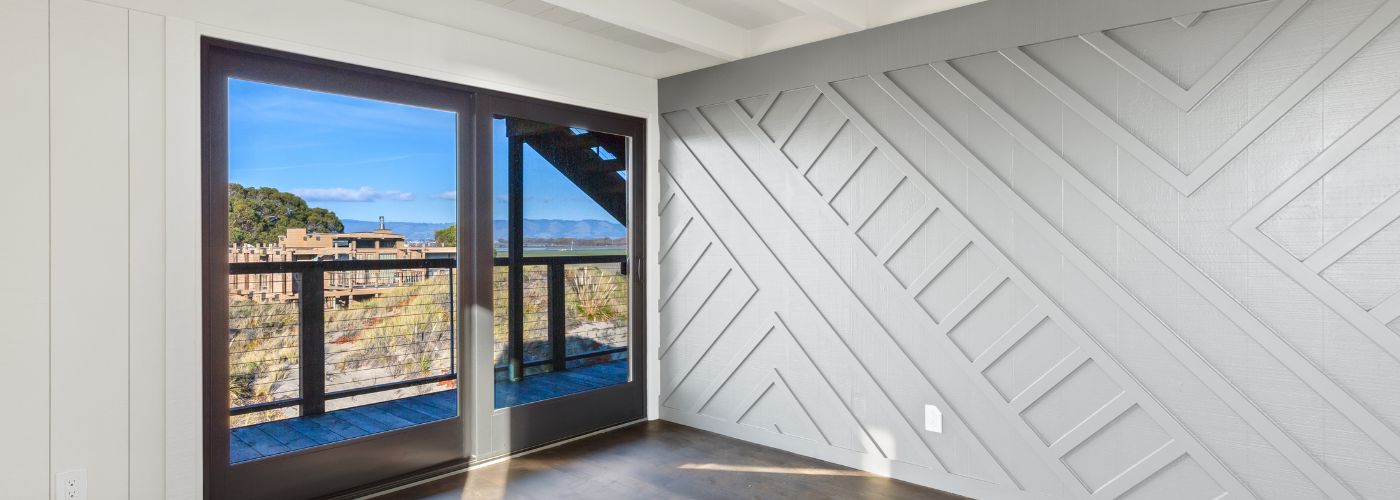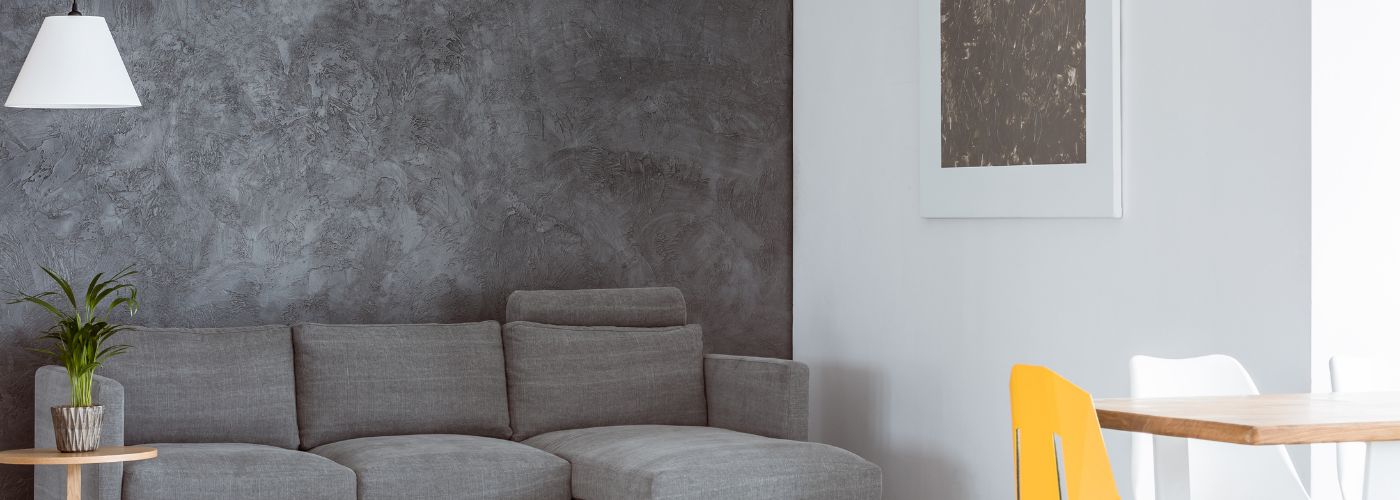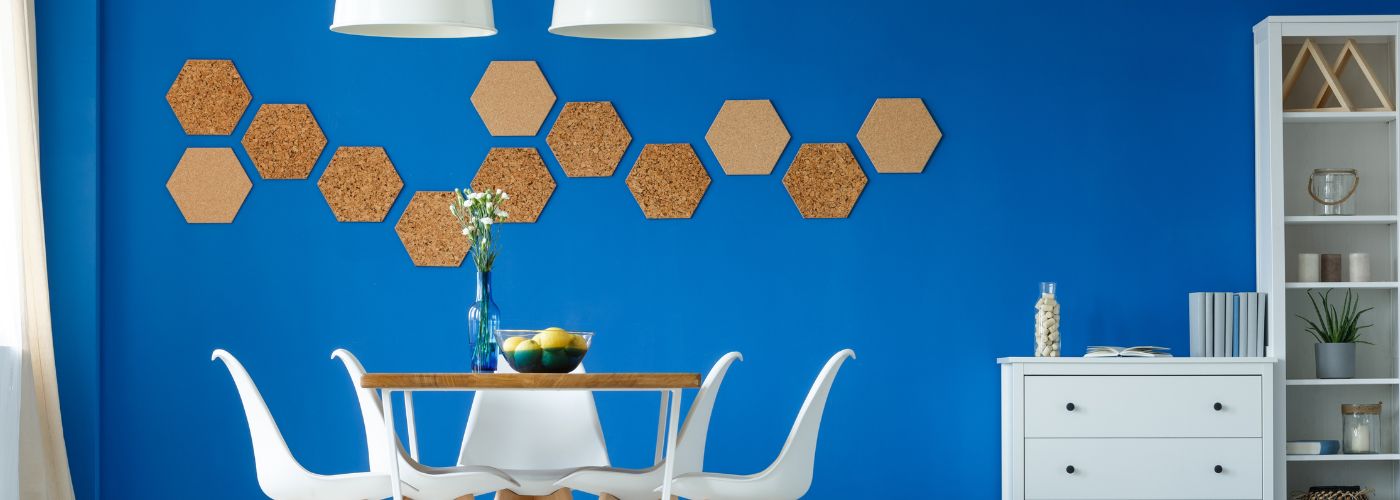Accent walls are a fantastic way to add a pop of color, texture, or personality to a room. Whether you’re wondering if accent walls are still in style or how to paint one, we’ve got you covered. Let’s explore how to create a stunning accent wall for your home!
Are Accent Walls Out Of Style?

The short answer is no, accent walls are not out of style. In fact, they continue to be a popular design choice for homeowners looking to enhance their living spaces with a little creative house painting!
Accent walls can transform a room by providing a focal point and creating visual interest. However, like any design trend, the way we approach accent walls has evolved over time.
Instead of the bold and contrasting colors that were once the norm, today’s accent walls often feature more subtle and sophisticated choices. Think muted tones, textured wallpaper, or even reclaimed wood panels. The key is to create a harmonious and balanced look that complements the overall aesthetic of the room!
How To Paint An Accent Wall

Painting an accent wall is a great way to infuse color into a room without overwhelming it. Here’s a step-by-step guide to help you get started:
Choose Your Wall: Select the wall you want to turn into an accent wall. It’s typically the one that draws the most attention, such as the wall behind your bed or sofa.
Select Your Color: Opt for a color that complements the existing décor and color scheme of your carpet design and room. If you’re unsure, earthy tones like muted greens, blues, or warm grays are safe choices.
Prepare the Surface: Clean the wall and patch any holes or imperfections. Sand the surface lightly, and then apply a coat of primer. This will ensure an even finish and better adhesion for your chosen paint color.
Paint the Wall: Start by cutting in around the edges with a paintbrush, then use a roller to cover the rest of the wall. Apply two coats for a solid finish, letting the first coat dry completely before adding the second.
Add Final Touches: After the paint has dried, step back and assess the look. You can leave it as is, or if you’re feeling creative, consider adding a stenciled design, wall decals, or even a wash of a slightly different shade for a subtle textured effect.
Remember, the key to a successful accent wall is balance. It should enhance the room’s overall design without overpowering it!
Which Wall Should Be An Accent Wall?
Choosing the right wall for your accent wall is crucial to achieving a harmonious look. Here are some tips to help you decide:
Focus Wall: The wall behind the main focal point of the room, such as the headboard in a bedroom or the TV in a living room, is an excellent choice for an accent wall. It naturally draws the eye and creates a balanced composition.
Architectural Features: If your room has unique architectural features like alcoves, niches, or a fireplace, consider making them the accent wall. This can accentuate these elements and make them stand out.
Wall with No Distractions: Opt for a wall with minimal distractions like windows, doors, or large pieces of furniture. An accent wall should be able to shine on its own.
Should An Accent Wall be Lighter Or Darker?
Choosing whether your accent wall should be lighter or darker depends on your overall design goals and the mood you want to create. Here are some guidelines:
Lighter Accent Wall: Lighter colors can make a room feel more open and spacious. They work well in smaller rooms or areas with limited natural light. Picking colors for accent walls that are lighter in tone also lend themselves to a softer and more tranquil ambiance.
Darker Accent Wall: Darker colors add drama and coziness to a room. They are ideal for creating a sense of intimacy in larger spaces or rooms with high ceilings. Dark accent walls can also make a bold statement when paired with the right décor and lighting.
Ultimately, the choice of color should reflect your personal style and the atmosphere you want to create in the room. Don’t be afraid to experiment and test paint samples on the wall to see how they look in different lighting conditions.
Accent walls remain a timeless and effective way to enhance your home’s interior design. Whether you choose to paint, wallpaper, or use another creative technique, the key is to strike the right balance and ensure that your accent wall complements the overall aesthetics of the room. With the tips and ideas provided in this guide, you’re well on your way to creating a stunning accent wall that elevates your living space! Happy decorating!
